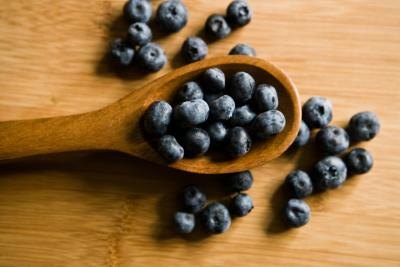Author
by
http://www.livestrong.com/article/350862-benefits-in-eating-blueberries-for-diabetes/
by
Blueberries are small fruits, but they contain a lot of power to help you do the big job of managing diabetes. The American Diabetes Association names blueberries as a "diabetes superfood" because blueberries are packed with nutrients, such as fiber and antioxidant vitamins, which provide several key benefits for dealing with diabetes.
Processing Glucose Efficiently
Blueberries may help your body process glucose for energy efficiently, both increasing its sensitivity to insulin and managing blood sugar, which can help you fight diabetes. A University of Michigan Cardiovascular Center study presented April 19, 2009 at the Experimental Biology convention in New Orleans notes that laboratory rats that were fed blueberries crushed into a powder showed improved insulin sensitivity, even when eating a high-fat diet along with the blueberries. Since most people with type 2 diabetes struggle with insulin resistance, greater sensitivity to insulin can help manage the disease. The University of Michigan Cardiovascular Center study also showed that laboratory rats that ate a powder made from crushed blueberries had lower blood sugar than they did prior to eating the blueberry powder, and researchers noted that their genes changed to allow their bodies to process glucose more efficiently than previously. If you suffer from type 2 diabetes, you may be able to lower your blood sugar by consuming plenty of high-fiber foods like blueberries, Joslin Diabetes Center notes.
Losing Weight
Since blueberries are low in calories yet high in nutrients, they may help you lose weight, which may help you fight diabetes. The Centers for Disease Control and Prevention reports that a 1-cup serving of blueberries contains just 83 calories and recommends replacing high-calorie snacks like chips with low-calorie fruits like blueberries as well as including blueberries in some of your meals. For example, you can mix blueberries with yogurt to enjoy a berry parfait for dessert. When laboratory rats in the University of Michigan Cardiovascular Center study were fed blueberry powder, their body weight and total fat mass decreased. Researchers noted that the rats' genes related to fat burning and storage were changed to help their bodies process fat more efficiently than before they ate blueberries, thereby reducing the rats' risk of diabetes.
Losing Belly Fat
Eating blueberries may help you lose belly fat, which is an important part of fighting diabetes, since excess abdominal fat increases your risk of diabetes. Fat cells in your belly produce hormones that can promote insulin resistance, which then can lead to diabetes. When the laboratory rats in the University of Michigan Cardiovascular Center study ate powder made from crushed blueberries as just 2 percent of their diets over 90 days, their amounts of abdominal fat decreased.
For further information log on website :http://www.livestrong.com/article/350862-benefits-in-eating-blueberries-for-diabetes/






